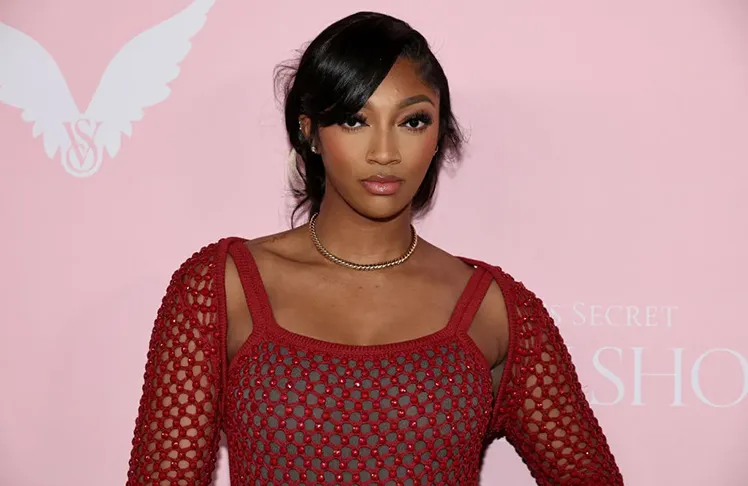
With the WNBA’s increased popularity and new eyes on the league due to the influx of two dynamic rookies, it can be easy to forget that the enormous pay inequity between WNBA and NBA players remains the same.
Yet Angel Reese, one of those dynamic rookies, reignited the discussion around the gender pay gap for players in The W, when she recently stated on Instagram Live, “I just hope y’all know, the WNBA don’t pay my bills at all.”
How could it? Reese’s salary was so insignificant to her, that she stated that she didn’t even know what it amounted to. And why should she? After the Chicago Sky drafted her seventh overall in the 2024 WNBA Draft, Reese signed a four-year contract worth $324,383 with an average annual salary of $81,096. For a first-year student out of college, the average American could surmise that this would be a more than decent salary to live off. For a high-profile superstar athlete like Reese living in Chicago, the most expensive major city in the Midwest, it’s peanuts.
But before I start crying a river for Reese, let’s remember that Reese, a student at LSU, had several NIL (name, image, and likeness) deals with brands like Reebok, Topps, Aribnb, Tampax, Beat by Dre, Mercedes-Benz of Baton Rouge, Mc’Donald’s, Coach and Sony PlayStation just to name a few. Her estimated NIL value was between $1.7-$1.8M. Since becoming a pro, that estimation has increased to upwards of $2M.
It’s no secret that Reese and her WNBA counterpart’s “bags” pale compared to players in the NBA. The average NBA salary for the 2023-24 season exceeds $12 million, while WNBA players earn an average of just $116,580. Yet, if we all do simple math, there is no comparison to even be made. The NBA is projected to earn $13 billion in revenue in 2024, while the WNBA is expected to cap at only $200 million for 2024. Even with the WNBA being more popular than ever before and revenue doubling since 2019, the league’s highest-paid player is the Las Vegas Aces’ Jackie Young at $252,450 per year.
Several things must be addressed to even put a pebble-sized dent in the pay gap between WNBA and NBA players. The WNBA must increase their casual woman viewership, especially women of color. According to Sports Business Journal, the most pronounced gains from a viewership perspective have occurred in three cohorts; young viewers, male viewers, and white ones.
She pays a whopping $8k monthly rent!
The league must find a way to increase the number of Black women supporting the WNBA and pay its players more. We must also be truthful about the elephant in the room. The league must find a way to reach those fans who, whether they admit it or not, are less inclined to support a league full of Black LBGTQ+ women who may not resemble some fan’s traditional, outdated views on gender and sexuality. In the end, increased viewership from African American women and other groups not all the way locked in — in addition to purchasing more WNBA merchandise — will go a long way toward enticing advertisers to more readily invest in the WNBA.
The league must build stronger fan connections through engaging and innovative content, more impactful storytelling, and social media campaigns. The challenges, successes, and journeys of WNBA players must be told with the same intensity as they are in the NBA. Lastly, the WNBA must also opt out of their CBA (Collective Bargaining Agreement) next season to go back to the table to renegotiate. The WNBA’s regular season was the most watched on record with over 54 million unique views across ABC, CBS, ESPN, ESPN2, Ion, and NBATV.
This leverage has to be used to negotiate better basketball-related revenue splits. NBA players enjoy a 50-50 split of broadcast money and jersey sales with their owners. WNBA players only get a measly 9.3% of total league revenue, an embarrassing percentage when even compared to other major sports leagues such as the NFL (48%) and NHL (50%).
That takes me back to Reese, who shocked many viewers when she shared on Instagram that she pays a whopping $8k monthly rent! Any halfway-decent financial planner will tell you that the rule is to spend no more than 30% of your monthly gross income on rent. After doing the math, Reese would need to earn a gross income of roughly $320,000 annually. Reese is coming nowhere close to that with her WNBA salary alone, but when you factor in her endorsements, NIL deals in college, and other ventures, I can guesstimate that she can pay the $8K a month.
In a perfect world, pay inequities become a thing of the past for WNBA players
Being able to pay for something versus being able to afford it are two different situations. Too many times, athletes in the limelight are around other celebrities and folks who have the means to spend money in excess. Some can afford to, while others pretend that they can. I don’t want to come off as counting Reese’s pockets, I just hope that she has a good financial advisor and is being careful. Making the bag is the easier part, keeping the bag for many athletes is more challenging. The ball always stops bouncing, and at some point, the legs stop jumping.
In a perfect world, pay inequities become a thing of the past for WNBA players, and I no longer need to write articles like this. In this perfect fictitious world, WNBA players will be securing their bags with regularity, superstar athletes like Brittany Griner won’t have to travel into dangerous territories to further add to the zeros in her bank account in the off-season, and Angel Reese will utilize her plethora of endorsements to simply support her lucrative WNBA contract. Additional financial opportunities outside of the actual game will just be icing on the cake for WNBA superstars.
But I can’t help but wonder if maybe, from a pay equity standpoint, spreading my Wings and thinking that The Sky is the limit is just a Dream. Or maybe, as fans, we can be the ones who support the WNBA players and potentially serve as Sparks of change. Pay equity is not only financial Liberty for WNBA players but could also be the opening the Sun needs to finally shine down on well-deserving players in a persevering league who have, over the years, weathered The Storm.
See what I did there? If not, you need to buckle down, buy your favorite player’s jersey, and go watch and support more WNBA basketball.

John Celestand is the program director of the Knight x LMA BloomLab, a $3.2 million initiative that supports the advancement and sustainability of local Black-owned news publications. He is a former freelance sports broadcaster and writer who covered the NBA and college basketball for multiple networks such as ESPN Regional Television, SNY, and Comcast Sportsnet Philadelphia. John was a member of the 2000 Los Angeles Lakers NBA Championship Team, playing alongside the late great Kobe Bryant and Shaquille O’Neal. He currently resides in Silver Spring, Maryland, with his wife and son.















